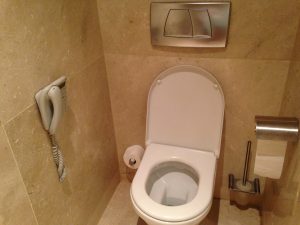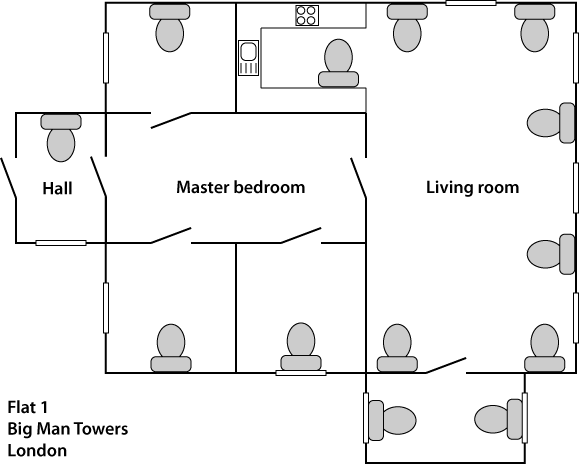We did an episode of A Breath of Fresh Beans a while back about pet peeves. You know, things that wind you up beyond all reason that other people probably don’t know or care about. In the podcast I think mine was to do with people putting those metal letters back to front in cast iron gates, and Phil at work tangling up all the phone cords.
Anyway, another one occurred to me the other day – one that’s annoyed me to an admittedly ridiculous degree for several years now – and I thought I’d share it here so that you can be certain exactly how skewed my priorities really are.
A few years back some of the toilets at work were refurbished. There’s now a big mirror above all the sinks, underneath which is concealed soap and paper towel dispensers. You know the sort of thing. To help you find all the hidden bathroom accessories there are little labels on the mirror to show you where they are.
Here’s what they look like.

There are only these two labels, and they each appear about three times across the width of the mirror. I mean, come on, you’ve spotted the first problem already, right? The “soap” one is in Helvetica and the “Towel” one is in Futura. Bloody hell, guys, you’re only making two labels, can you try to pick the same font for both of them?
Then there’s the word “Towel”. For some reason they’ve made the T and the L bold, but not the rest. Look at the thicker the stroke width on those letters compared to the others. Why would you do that?
It would surely be easier to get it right than to get it this wrong. When you open your graphic design software to make two grey circles with a word inside each, it would surely be easier to get the font the same across both of them, instead of three different fonts mixed up in two words. How do you even manage that level of ineptitude?
Anyway, I know you don’t care, and I know it doesn’t matter, but it absolutely boils my piss, and I thought you should know.



